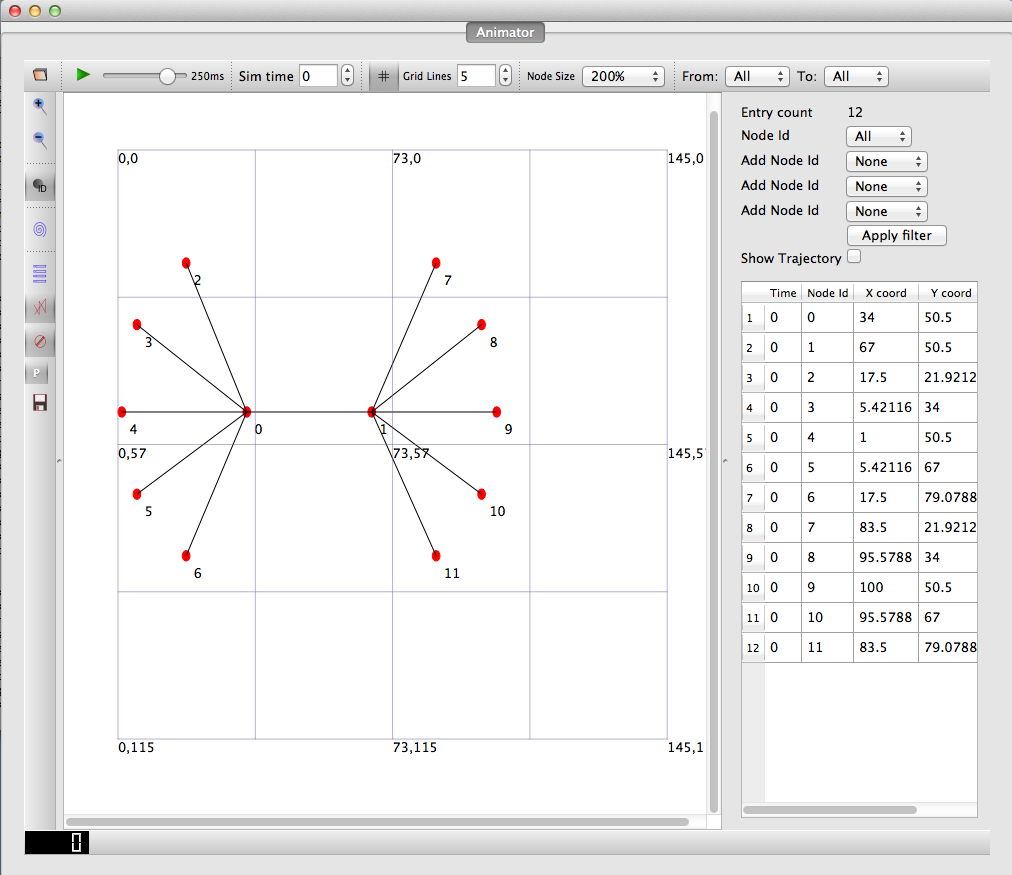NetAnim: Difference between revisions
Jump to navigation
Jump to search
| (137 intermediate revisions by 2 users not shown) | |||
| Line 1: | Line 1: | ||
NetAnim is an animator based on the | {{TOC}} | ||
NetAnim is an offline animator based on the Qt toolkit. | |||
It animates a previously executed simulation using an XML trace file generated during a simulation. The first version was developed by George F Riley. The current version was largely developed by John Abraham. NetAnim has not been actively maintained/improved since 2017. | |||
[[Image:NetAnim3.png|thumb|The NetAnim GUI]] | [[Image:NetAnim3.png|thumb|The NetAnim GUI]] | ||
== NetAnim Versions == | |||
* NetAnim 3.109 is compatible with ns-3.38 through the current version. | |||
** 3.109 is a minor release that removes Qt4 support and fixes some compiler warnings | |||
* [[ NetAnim 3.108 ]] was first bundled with ns-3.27 and is compatible through ns-3.37 (and even ns-3.38) | |||
* | * [[ NetAnim 3.107 ]] | ||
* [[ NetAnim 3.106 ]] | |||
* | * [[ NetAnim 3.105 ]] was released with ns-3.20 | ||
* | * [[ NetAnim 3.104 ]] was released with ns-3.19 | ||
Latest revision as of 13:10, 5 October 2023
Main Page - Roadmap - Summer Projects - Project Ideas - Developer FAQ - Tools - Related Projects
HOWTOs - Installation - Troubleshooting - User FAQ - Samples - Models - Education - Contributed Code - Papers
NetAnim is an offline animator based on the Qt toolkit. It animates a previously executed simulation using an XML trace file generated during a simulation. The first version was developed by George F Riley. The current version was largely developed by John Abraham. NetAnim has not been actively maintained/improved since 2017.
NetAnim Versions
- NetAnim 3.109 is compatible with ns-3.38 through the current version.
- 3.109 is a minor release that removes Qt4 support and fixes some compiler warnings
- NetAnim 3.108 was first bundled with ns-3.27 and is compatible through ns-3.37 (and even ns-3.38)
- NetAnim 3.105 was released with ns-3.20
- NetAnim 3.104 was released with ns-3.19
